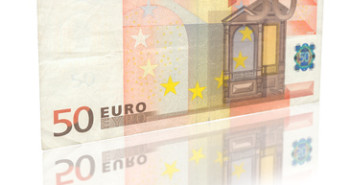It’s been more of the same from the EUR/USD on Wednesday, as the pair continues to have an uneventful week. In the European session, the pair is trading slightly above the 1.37 line. On the release front, Eurozone Current Account slipped to a six-month low, and the markets are not expecting much cheer from Eurozone Consumer Confidence, which has looked weak. In the US, the Federal Reserve releases its policy meeting minutes, and Fed chair Janet Yellen will deliver remarks at a university commencement in New York.
- EUR/USD spent most of the Asian session close to the 1.37 line, but edged higher late in the session. In European trading, the pair has dipped back towards the 1.37 line.
Current range: 1.37 to 1.3740.
Further levels in both directions:Â 
- Below: 1.37, 1.3650, 1.3560, 1.3515 and 1.3450
- Above: 1.3740, 1.3785, 1.3830, 1.3865, 1.3905, 1.3964, 1.40, 1.4055 and 1.4105
- On the downside, 1.37 is fluid as it continues to see action. 1.3650 follows.Â
- 1.3740 is the next resistance line.
EUR/USD Fundamentals
- 8:00 Eurozone Current Account. Exp. 24.2B. Actual 18.8B.
- Tentative – German 10-year Bond Auction.
- 14:00 Eurozone Consumer Confidence. Exp. -8 points.
- 14:00 FOMC Member William Dudley Speaks.
- 14:30 US Crude Oil Inventories. Exp. -0.1M.
- 15:30 US Federal Reserve Chair Janet Yellen Speaks.
- 17:30 US FOMC Member Narayana Kocherlakota Speaks.
- 18:00 US FOMC Meeting Minutes.
*All times are GMT
For more events and lines, see the EUR/USD EUR/USD EUR/USD EUR/USD EUR/USD .
EUR/USD Sentiment
- Markets eye Fed minutes: The Federal Reserve will be in the spotlight on Wednesday, with the release of the minutes of the most recent policy meeting. The Fed continues to taper its QE program, which has been reduced to $45 billion/month. The Fed is expected to wind up the program before the end of 2o14, provided that the economy does not take a downward spin. Since 2008, the benchmark interest rate has been close to zero, and no increases are expected before mid-2015. The pace of future increases will likely be slow, to allow for a smooth adjustment from the economy and the financial markets. Federal Reserve chair Janet Yellen sounded a cautious tone in recent testimony to Congress, and if this is reiterated in the minutes, the US dollar could lose some ground against its major rivals.
- Will the ECB press the trigger? After climbing close to the key 1.40 level, the euro put on the brakes after ECB president Mario Draghi stated he was prepared to take action in June to tackle low growth and weak inflation. The markets have heard tough talk (and no action) from Draghi before, but there is a feeling in the air that the June ECB meeting could be different. There is speculation that the ECB could cut the benchmark rate, which is currently at just 0.25%, or lower deposit rates, which are at 0%, into negative territory. As we get closer to the June meeting, traders can expect some volatility from EUR/USD.
- US housing numbers up: Last week wound up with encouraging housing numbers out of the US. Building Permits jumped to 1.08 million, well above the estimate of 1.01 million. This was the highest level we’ve seen since December 2006. Housing Starts continues to move higher and climbed to 1.07M, compared to the estimate of 0.98M. This marked a five-month high. Meanwhile, UoM Consumer Sentiment dipped to 81.8 points, short of the estimate of 84.7 points.
- Weak inflation persists in Eurozone: Inflation indicators continue to look weak in the Eurozone, and this was reinforced on Tuesday as German PPI came in at -0.1%, short of the estimate of 0.0%. The ECB has tried to downplay concerns over lack of inflation, but when After climbing close to the key 1.40 level, the euro put on the brakes after ECB president Mario Draghi stated he was prepared to take action in June to tackle low growth and weak inflation, the euro responded with sharp losses. If we don’t see a sudden improvement in inflation numbers, there is a strong likelihood that the ECB will be forced into making a move.
- Eurozone GDP numbers disappoint:Â GDP is the primary gauge of economic activity, and the April numbers pointed to trouble for the Eurozone. Eurozone Flash GDP dipped to 0.2% in Q1, short of the estimate of 0.3%. French and Italian GDP releases also disappointed, as both weakened in April and missed expectations. On a bright note, German Preliminary GDP jumped 0.8% in Q1, its best showing since Q1 in 2013. Â This edged above the estimate of 0.7%. GDP data is doubly important now that ECB head Mario Draghi has said that the Bank could take action in June, with growth projections sure to be an important factor in what the ECB chooses to do at that time.
More:Â Is the Eurozone Crisis Really Over?



